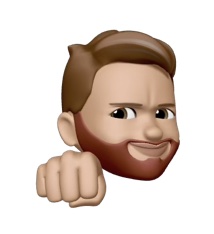by Hudson Moura
Matthew Rankin’s Universal Language is a visually striking and intellectually dense cinematic experiment that merges Persian and Québécois cultures within an abstract, frozen Canadian landscape. Spoken in both Farsi and French, the film draws inspiration from Iranian cinema’s poetic, repetitive dialogue and geometric compositions and storytelling, Universal Language also echoes the dreamlike, surrealist works of Guy Maddin (experimental filmmaker from Winnipeg) and the meticulous mise-en-scène of Jacques Tati, embracing an eccentric aesthetic that defies conventional storytelling.
A Canada That Exists Only in Itself
Rankin’s Winnipeg is transformed into an uncanny Persian enclave, where Persian script adorns municipal buildings, Tim Hortons signs, and storefronts, and a mosque stands at the city’s heart. The film resists historical anchoring, blending contemporary elements—like cell phones and portraits of Canadian and Québécois prime ministers—with anachronisms such as political discussions from 1960s–70s Quebec and smoking on buses. This temporal dislocation makes it difficult to pinpoint the film’s exact setting, reinforcing its fantastical, timeless quality.
Rankin plays with a fragmented narrative that offers no singular thread but rather interwoven sketches. These include a strict French teacher, two girls trying to unfreeze a banknote stuck in ice to buy glasses for a classmate, and a flock of turkeys wandering through the city. Massoud, a struggling guide in a city with little tourism, attempts to support his family while his wife, a “lacrymologist” at the local cemetery, collects tears in bottles. These vignettes unfold in a circular narrative where the film’s opening sequence leads directly into its conclusion, yet individual stories remain unresolved, emphasizing the film’s self-contained, almost hermetic nature.
A Language That Feels Lost in Translation
The film’s title, Universal Language, may reference the film’s intricate tapestry of symbols that blend Iranian and Canadian cultural markers. However, the sheer abundance of these symbols—many of them deeply personal or obscure—creates a barrier to accessibility. The film operates within a semiotic labyrinth, where meaning is both omnipresent and elusive. While its rich visual language suggests a universality, the audience may feel disoriented, struggling to decipher the significance of recurring motifs like the ever-present turkeys or the rigid, color-blocked architecture.
The film’s mise-en-scène is undeniably one of its greatest strengths. The rigid, geometric framing, stark concrete landscapes, and muted, icy color palette contribute to an overwhelming sense of stasis—Canada as a frozen, immovable space, locked in a time that no longer exists. This architectural rigidity contrasts with the fluidity of identity explored through characters like the transgender individuals populating the film, further emphasizing Universal Language’s embrace of hybridity and in-betweenness.
A Personal and Cinematic Palimpsest
While largely conceptual, Universal Language carries an autobiographical undercurrent, as Rankin himself is one of the film’s central characters. His character returns to Winnipeg to visit his father’s grave and his ailing mother, who now lives with Massoud, a man who once cleared the snow from her doorstep. In a surreal twist, Rankin’s mother, suffering from memory loss, believes that Massoud is actually her son. This quiet, emotional layer grounds the film within the realm of personal loss and dislocation, reinforcing its meditation on memory, migration, and belonging.
Universal Language is a complex fable—at times self-absorbed, emotionally detached, uncharismatically characters, and impenetrable—a cinematic puzzle that blends cultures, languages, and histories into an otherworldly portrait of a Canada that exists outside of time. Yet, for all its ambition in crafting a new “universal language,” the film leaves the viewer wondering: can such a language truly exist, or are we all, in the end, lost in translation?
 3/5
3/5